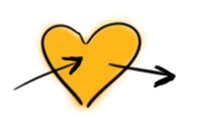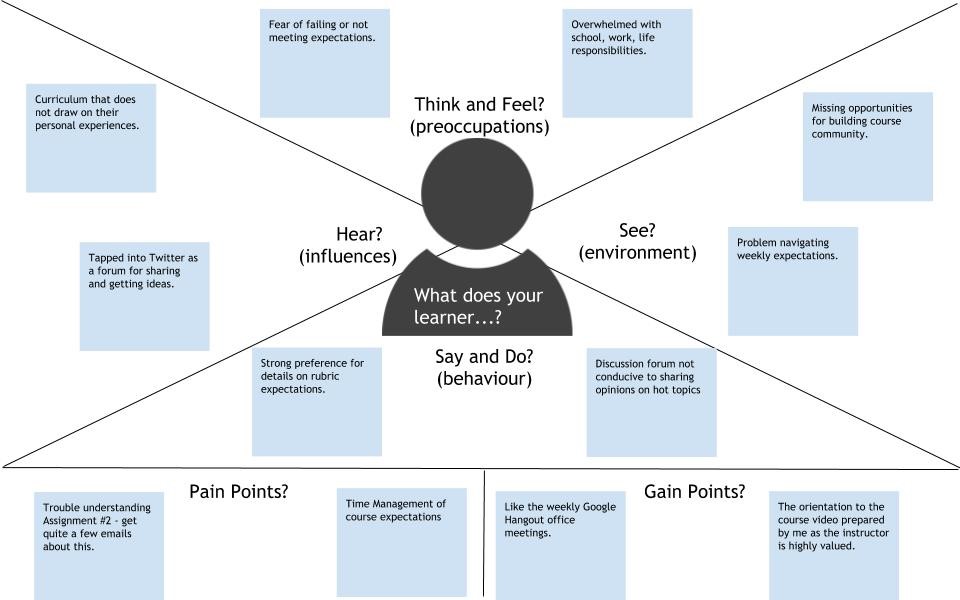Technologist
Technologist
Empathize with your learners

Design thinking starts with empathy. When you design something that is going to be used by someone else—for a lecture, an activity, an assessment—you must first understand what that person needs. For example, when architects design a building, they put aside their own desires and think about what the users of that building need.
Extend Activity

This exercise asks you to empathize with your users—your learners—to identify a challenge that could be solved through the purposeful use of technology in your professional practice. You are going to create an empathy map! What does an empathy map look look like? Here is an example that you can download as a template.

Create an empathy map following these steps:
- Gather information from and about your learners. Try and utilize the information that you have already acquired or know to be true through feedback from course evaluations, emails, and other communications. Ideally, you will create a specific method of gathering feedback for this exercise. You might also do this through conversations or other forms of formal or informal information gathering
- Ask/gather information about what your learners think, feel, say, do, see, and hear. What do they have difficulty understanding or doing in your learning context??
- Reflect on the feedback you have collected from your learners and begin sketching your empathy map. Use the Empathy Map Template with fields to respond to the above guiding questions.
- To use the template, go into the File menu on the Google document and make a copy of the file. Rename the file for yourself and complete the template.
- Please upload or link to your empathy map, as a response to the Empathy Map activity.
- As evidence of completion, please plan to enter the web address for your response in the Technologist badge submission form.
After your Empathy Map is complete, try to get additional feedback in one of the following ways:
- Seek out a colleague within your department/discipline area to discuss with your empathy map with him/her. See if there are shared concerns, or perhaps strategies they might suggest that you have not considered.
- Circle back to your learners to make sure what you have captured accurately reflects their experience. This could involve an informal conversation with one or more of the learners you gathered the information from.




